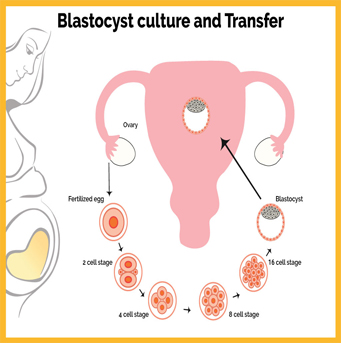
What is Blastocyst Transfer ?
Blastocyst culture and transfer is a technique developed for in vitro fertilization (IVF). This procedure intends to maximize pregnancy rates while minimizing the risk of multiple pregnancies. At Altius , our fertility doctors and embryologist are providing the best Blastocyst Transfer treatment for women, especially older women to overcome infertility.
Why choose Blastocyst Transfer Routine?
It is the natural conception process by preparing an embryo to the stage that it would have been at if it had arrived in the uterus, the conventional way. The process is far superior to a pure in vitro fertilisation (IVF) procedure.
Effective Timing : In traditional IVF transfers, an embryo is transferred to the uterus when the uterine lining is fully prepared to receive it. In natural circumstances, an embryo is about six days old when it lands in the uterus. A blastocyst transfer presents the embryo and the uterus with conditions similar to natural conception.
Is Blastocyst Transfer Routine Right for me ?
A blastocyst transfer demonstrates the best results in younger women. If our fertility specialist has determined that patient is a good candidate for in vitro fertilisation (IVF), or if previous IVF attempts have failed on account of hindered implantation, a blastocyst transfer may be adapted for you. Women with low healthy egg reserves are excellent selection for blastocyst procedures.
Here are some of the risks involved :
Under Developed Embryos :
The success of a blastocyst transfer routine pivots on the ability of a selection of embryos to reach the blastocyst stage. Not all embryos may develop adequately to become blastocysts. Sometimes, embryos stagnate at the four-cell stage. In such a case, your embryologist may advise you to go ahead with a simple IVF procedure, to secure your chances of gaining at least some healthy four-day-old embryos, as opposed to no blastocysts at the end of six days.
Multiple Births
Inserting more than one blastocyst could result in multiple births. Our experts ensure that no more than two blastocysts are deposited into the uterus in any given cycle.
